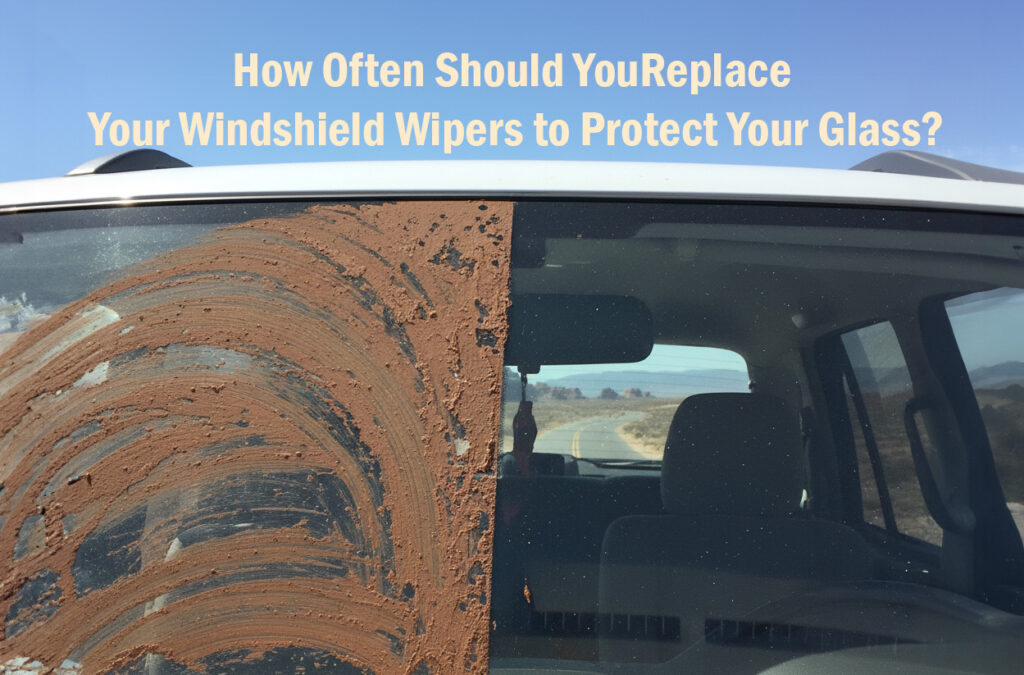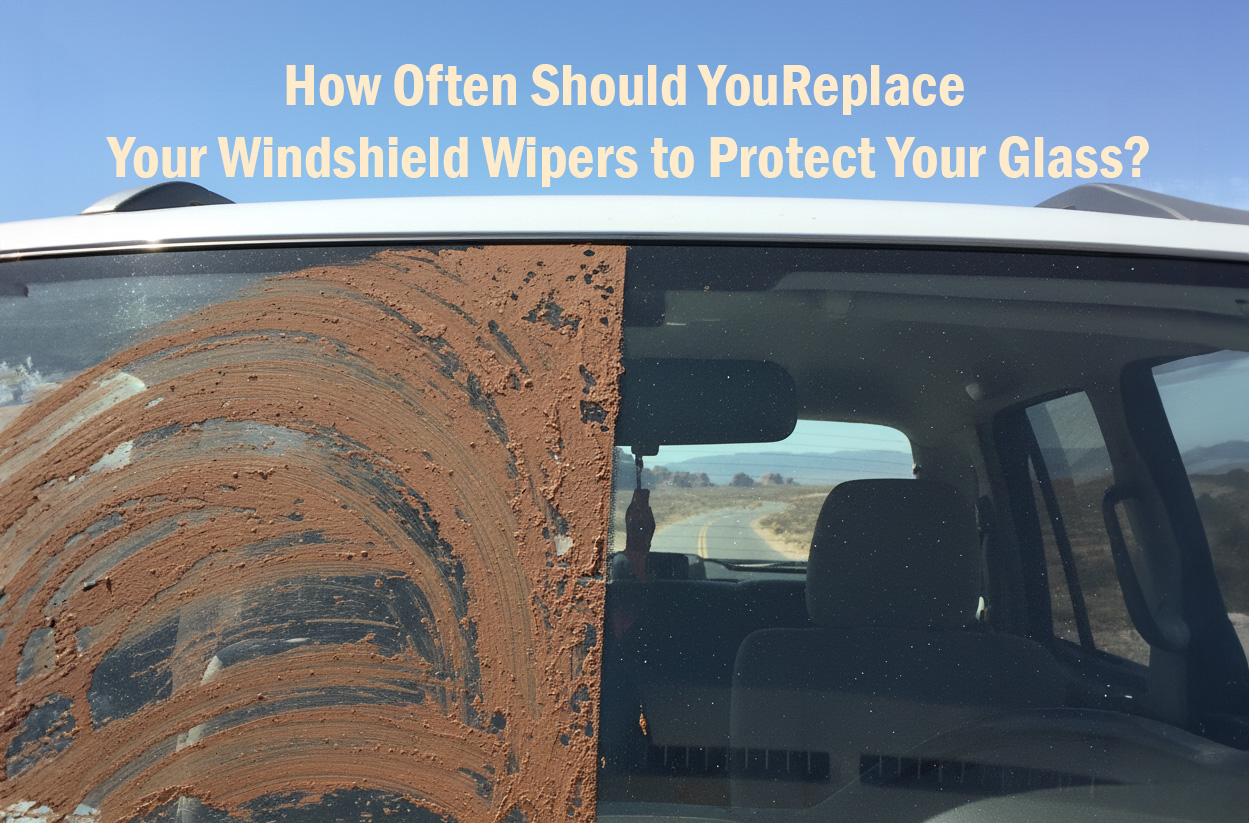Your Windshield’s First Line of Defense
When most drivers think about windshield protection, they picture strong glass or quality replacement work, but one of the simplest and most overlooked protectors of your auto glass is your windshield wipers. These thin rubber blades work tirelessly to keep your view clear through rain, snow, dirt, and debris. Yet, when they wear down or get damaged, they can do more harm than good, scratching, streaking, and even permanently damaging your windshield’s surface.
So how often should you replace your wipers, and what should you watch out for? Let’s break it down.
Why Windshield Wipers Are So Important
Windshield wipers don’t just clear water, they protect your visibility and your glass itself. A good set of wipers:
- Removes rain, snow, mud, and grime for a clear, unobstructed view
- Prevents dirt or debris from hardening and scratching the glass
- Reduces glare from streaks that distort your vision in sunlight or at night
- Keeps your ADAS (Advanced Driver Assistance Systems) cameras clear if mounted near the windshield
When wipers begin to streak or skip, visibility suffers, and the rubber blade can start dragging debris across the glass like sandpaper. Over time, this can lead to fine scratches or surface damage that weaken the glass or make it more prone to cracking.
What Causes Windshield Wiper Damage
Wiper blades are made of flexible rubber and metal components that face constant exposure to the elements. Here are some of the main culprits that cause wipers to wear out prematurely:
- Dirt and Dust: Dust and road grime collect under the wiper blades, wearing down both the rubber and the glass surface.
- Bugs and Tree Sap: Sticky organic residue can cause wipers to drag unevenly, leading to streaking and tearing.
- Gravel and Small Debris: Pebbles kicked up by other vehicles can chip your glass and damage wiper edges as they sweep over them.
- Ice and Snow: In winter, frozen wipers can tear when you try to use them on icy glass. Ice buildup on the rubber also reduces flexibility.
- Sun and Heat: Prolonged UV exposure in hot climates (like Arizona or Nevada) dries out rubber blades, causing cracks and brittleness.
- Cracked or Chipped Windshields: Damaged glass can catch and tear the rubber edge of a wiper as it moves across the surface.
When and How Often to Replace Your Windshield Wipers
Most manufacturers recommend replacing windshield wipers every 6 to 12 months, depending on weather conditions and use. However, some signs mean you shouldn’t wait that long:
- Streaking or smearing water across the glass
- Skipping or chattering noises when in use
- Visible cracks or splits in the rubber
- Uneven wiping or missed spots on the windshield
To keep them in top condition, clean your wiper blades every couple of weeks with a damp cloth to remove buildup. During harsh seasons, especially winter and summer, check them more frequently, as temperature extremes can cause the most wear.
Seasonal Effects on Wiper Lifespan
Different seasons can drastically affect how long your wipers last:
- Winter: Ice, road salt, and freezing temperatures cause rubber to stiffen and crack. Always defrost before turning them on.
- Spring: Pollen, mud, and rain increase use and wear. Clean wipers regularly.
- Summer: UV rays dry out the rubber and warp the metal frame. Parking in the shade helps.
- Fall: Falling leaves and debris can get caught under blades, causing uneven movement and scratching.
If you live in an area with severe weather swings, consider seasonal wiper blades, winter blades with protective rubber shells or silicone blades for long-lasting durability.
The Cost of Ignoring Worn Wipers
Neglecting worn-out wipers doesn’t just risk your visibility, it can cost you far more than a set of new blades. Old or damaged wipers can scratch your windshield, creating visibility issues and potentially requiring a full windshield replacement.
Once a scratch becomes deep enough, it can weaken the glass and make it more susceptible to cracks or chips from small impacts. And if you already have a cracked windshield, continued use of rough wipers can make the damage worse.
When It’s Time for a Windshield Replacement
If your windshield is cracked, chipped, or deeply scratched, replacing your wipers won’t fix the underlying issue. Damaged glass compromises both driver safety and structural integrity. A damaged windshield can distort visibility, interfere with ADAS sensors, and even reduce roof support in an accident.
To stay safe, always repair or replace your windshield as soon as you notice damage.
Get a Free Quote Before You Replace
Before choosing where to replace your windshield, it’s smart to compare prices and reviews. At Glass.net, you can get free quotes from up to three trusted local auto glass shops, helping you find the best deal for quality service.
Your windshield wipers protect your visibility. Your glass protects your life. Keeping both in great shape ensures you’re always seeing clearly and driving safely.
Key Takeaway:
Replace your windshield wipers at least twice a year, clean them regularly, and don’t ignore signs of wear. It’s a small, inexpensive habit that can save you from costly windshield damage and keep you safer on the road.

To read more, visit blog.glass.net

